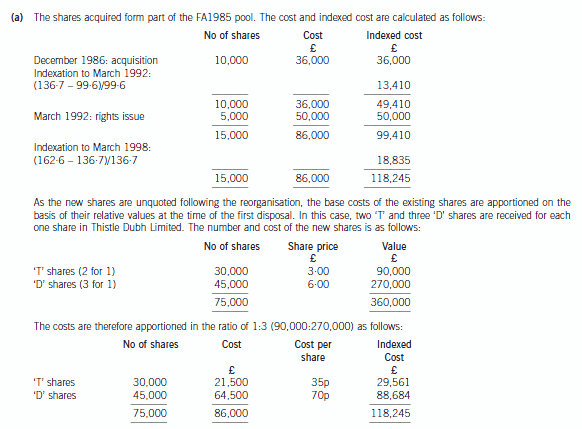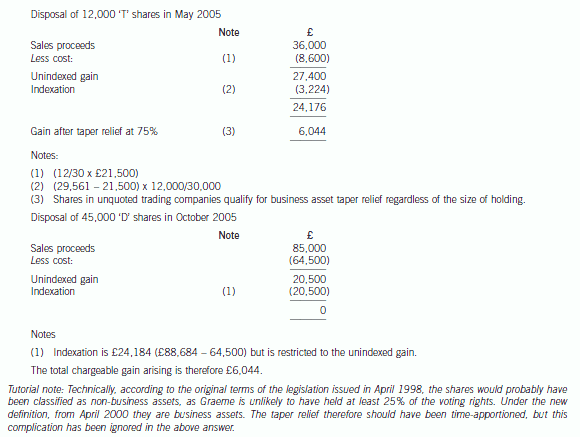请注意:ACCA考试形式是怎样的,你知道吗?
发布时间:2020-09-03
各位小伙伴注意啦,许多想要报考ACCA考试的同学想知道ACCA考试的形式是怎样的,为了帮助大家了解更多,51题库考试学习网为大家带来了ACCA考试形式以及考试相关信息,让我们一起来看看吧!
一、ACCA考试形式有哪些?
ACCA考试有机考也有笔试。F1-4是随时机考,F5-F9在2018年3月份开始实行全部机考,P阶段只有笔试。
F1-4机考全是选择题
F5-F9在2018年3月份开始实行全部机考,题型有选择题有论述题,每门考试的选择题和大题占比不同
P阶段只有笔试全是论述题。
对此,ACCA官方有着明确的要求:
1、AC-LW课程为随时机考。学员可在任一时间进行报考和报考,随时机考的考试成绩将在当天公布。
2、PM-FM自2018年开始,全部实施了分季机考模式。学员需要在官方规定的3/6/9/12月考试季内进行考试,考试成绩大约会在考试结束后的40天公布。
3、SBL、SBR及选修课程均为笔考模式。从整体的发展趋势来看,ACCA全部改革为机考考试已经不远。而且在新改革的应用技能课程考试中,学员反应良好,通过率也有所上升。可见,对于新的机考模式,大部分学员还是能够从容以对的。
当然,对于笔试和机考的确是有些差别的。这主要体现在:
1、由于机考大题部分需要通过计算机进行解答,所以计算机打字能力和某些公式的熟练度会间接地影响考试结果;
2、考试时间有所不同。目前,应用技能课程的机考时间均为3个小时,而战略课程的笔试一般为3小时15分钟,SBL为4个小时。
二、ACCA笔试考试需要注意什么?
1、ACCA考试全程要用黑色圆珠笔,这也是由扫描技术决定的。
2、不让随身带手机,一律关机放存包处。完全不用担心包或者手机会丢的情况,都是有老师专门看管的。所以千万不要带手机进考场哦,否则有可能直接认定为作弊。
3、不让用修正液、透明胶、涂改带等产品。ACCA试卷为扫描批改,涂改过的部分很有可能是扫不上的、
4、带水,请撕去外包装。同时也不能够带咖啡这种有颜色、不透明的饮品。巧克力不一定能带进考场,不过可以带硬糖。
以上就是今天分享的全部内容了,各位小伙伴根据自己的情况进行查阅,希望本文对各位有所帮助,预祝各位取得满意的成绩,如需了解更多相关内容,请关注51题库考试学习网!
下面小编为大家准备了 ACCA考试 的相关考题,供大家学习参考。
(ii) Explain whether or not Carver Ltd will become a close investment-holding company as a result of
acquiring either the office building or the share portfolio and state the relevance of becoming such a
company. (2 marks)
(ii) Close investment holding company status
Carver Ltd will not become a close investment-holding company if it purchases the office building as, although it will no
longer be a trading company, it intends to rent out the building to a number of tenants none of whom is connected to
the company.
Carver Ltd will become a close investment holding company if it purchases a portfolio of quoted shares as it will no
longer be a trading company. As a result it will pay corporation tax at the full rate of 30% regardless of the level of its
profits.
(b) As a newly-qualified Chartered Certified Accountant in Boleyn & Co, you have been assigned to assist the ethics
partner in developing ethical guidance for the firm. In particular, you have been asked to draft guidance on the
following frequently asked questions (‘FAQs’) that will be circulated to all staff through Boleyn & Co’s intranet:
(i) What Information Technology services can we offer to audit clients? (5 marks)
Required:
For EACH of the three FAQs, explain the threats to objectivity that may arise and the safeguards that should
be available to manage them to an acceptable level.
NOTE: The mark allocation is shown against each of the three questions.
(b) FAQs
(i) Information Technology (IT) services
The greatest threats to independence arise from the provision of any service which involves auditors in:
■ auditing their own work;
■ the decision-making process;
■ undertaking management functions of the client.
IT services potentially pose all these threats:
■ self-interest threat – on-going services that provide a large proportion of Boleyn’s annual fees will contribute to a
threat to objectivity;
■ self-review threat – e.g. when IT services provided involve (i) the supervision of the audit client’s employees in the
performance of their normal duties; or (ii) the origination of electronic data evidencing the occurrence of
transactions;
■ management threat – e.g. when the IT services involve making judgments and taking decisions that are properly
the responsibility of management.
Thus, services that involve the design and implementation of financial IT systems that are used to generate information
forming a significant part of a client’s accounting system or financial statements is likely to create significant ethical
threats.
Possible safeguards include:
■ disclosing and discussing fees with the client’s audit committees (or others charged with corporate governance);
■ the audit client providing a written acknowledgment (e.g. in an engagement letter) of its responsibility for:
– establishing and monitoring a system of internal controls;
– the operation of the system (hardware or software); and
– the data used or generated by the system;
■ the designation by the audit client of a competent employee (preferably within senior management) with
responsibility to make all management decisions regarding the design and implementation of the hardware or
software system;
■ evaluation of the adequacy and results of the design and implementation of the system by the audit client;
■ suitable allocation of work within the firm (i.e. staff providing the IT services not being involved in the audit
engagement and having different reporting lines); and
■ review of the audit opinion by an audit partner who is not involved in the audit engagement.
Services in connection with the assessment, design and implementation of internal accounting controls and risk
management controls are not considered to create a threat to independence provided that the firm’s personnel do not
perform. management functions.
It would be acceptable to provide IT services to an audit client where the systems are not important to any significant
part of the accounting system or the production of financial statements and do not have significant reliance placed on
them by the auditors, provided that:
■ a member of the client’s management has been designated to receive and take responsibility for the results of the
IT work undertaken; and
■ appropriate safeguards are put in place (e.g. using separate partners and staff for each role and review by a partner
not involved in the audit engagement).
It would also generally be acceptable to provide and install off-the-shelf accounting packages to an audit client.
2 Graeme, aged 57, is married to Catherine, aged 58. They work as medical consultants, and both are higher rate
taxpayers. Barry, their son, is aged 32. Graeme, Catherine and Barry are all UK resident, ordinarily resident and
domiciled. Graeme has come to you for some tax advice.
Graeme has invested in shares for some time, in particular shares in Thistle Dubh Limited. He informs you of the
following transactions in Thistle Dubh Limited shares:
(i) In December 1986, on the death of his grandmother, he inherited 10,000 £1 ordinary shares in Thistle Dubh
Limited, an unquoted UK trading company providing food supplies for sporting events. The probate value of the
shares was 360p per share.
(ii) In March 1992, he took up a rights issue, buying one share for every two held. The price paid for the rights
shares was £10 per share.
(iii) In October 1999, the company underwent a reorganisation, and the ordinary shares were split into two new
classes of ordinary share – ‘T’ shares and ‘D’ shares, each with differing rights. Graeme received two ‘T’ and three
‘D’ shares for each original Thistle Dubh Limited share held. The market values for the ‘T’ shares and the ‘D’
shares on the date of reorganisation were 135p and 405p per share respectively.
(iv) On 1 May 2005, Graeme sold 12,000 ‘T’ shares. The market values for the ‘T’ shares and the ‘D’ shares on that
day were 300p and 600p per share respectively.
(v) In October 2005, Graeme sold all of his ‘D’ shares for £85,000.
(vi) The current market value of ‘T’ shares is 384p per share. The shares remain unquoted.
Graeme and Catherine have owned a holiday cottage in a remote part of the UK for many years. In recent years, they
have used the property infrequently, as they have taken their holidays abroad and the cottage has been let out as
furnished holiday accommodation.
Graeme and Catherine are now considering selling the UK country cottage and purchasing a holiday villa abroad.
Initially they plan to let this villa out on a furnished basis, but following their anticipated retirement, would expect to
occupy the property for a significant part of the year themselves, possibly moving to live in the villa permanently.
Required:
(a) Calculate the total chargeable gains arising on Graeme’s disposals of ‘T’ and ‘D’ ordinary shares in May and
October 2005 respectively. (7 marks)


9 Which of the following items must be disclosed in a company’s published financial statements (including notes)
if material, according to IAS1 Presentation of financial statements?
1 Finance costs.
2 Staff costs.
3 Depreciation and amortisation expense.
4 Movements on share capital.
A 1 and 3 only
B 1, 2 and 4 only
C 2, 3 and 4 only
D All four items
声明:本文内容由互联网用户自发贡献自行上传,本网站不拥有所有权,未作人工编辑处理,也不承担相关法律责任。如果您发现有涉嫌版权的内容,欢迎发送邮件至:contact@51tk.com 进行举报,并提供相关证据,工作人员会在5个工作日内联系你,一经查实,本站将立刻删除涉嫌侵权内容。
- 2021-02-02
- 2021-01-13
- 2020-01-10
- 2020-01-08
- 2020-01-09
- 2020-01-10
- 2020-01-10
- 2020-09-04
- 2020-08-12
- 2021-01-22
- 2020-01-10
- 2021-09-12
- 2020-01-10
- 2020-05-20
- 2021-01-16
- 2020-01-10
- 2020-01-08
- 2020-02-27
- 2019-12-28
- 2021-05-26
- 2020-02-26
- 2020-08-13
- 2020-01-08
- 2020-01-09
- 2020-01-10
- 2020-09-04
- 2021-01-16
- 2020-01-10
- 2020-09-03
- 2021-04-08